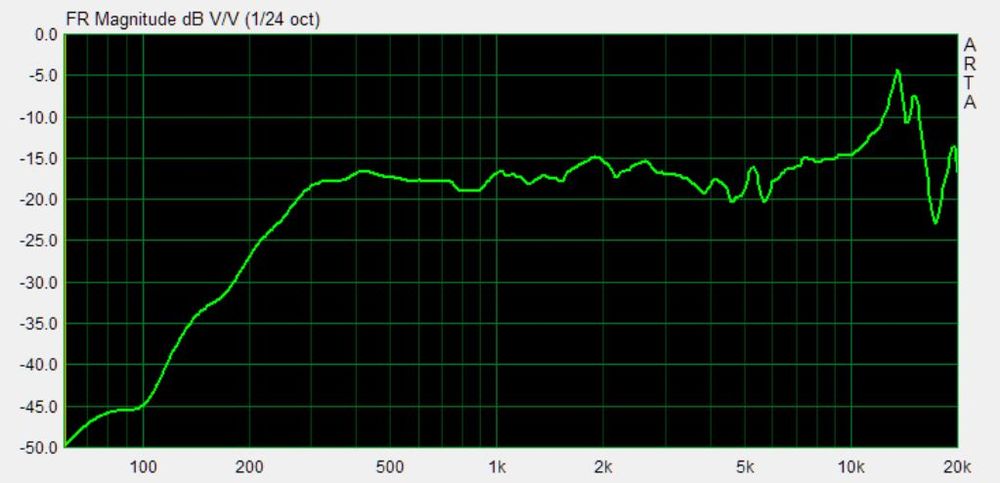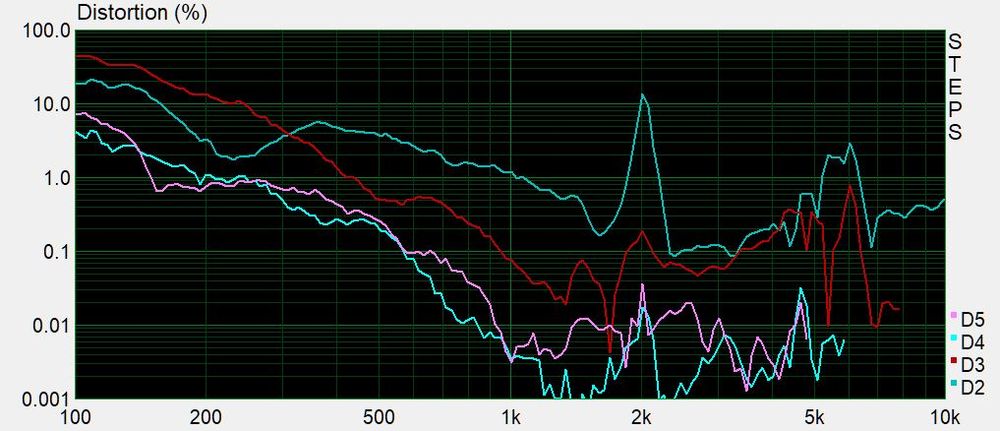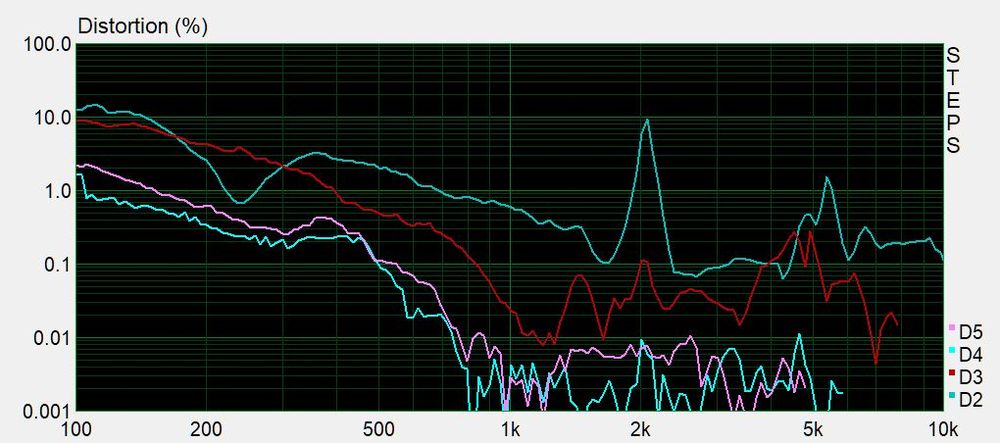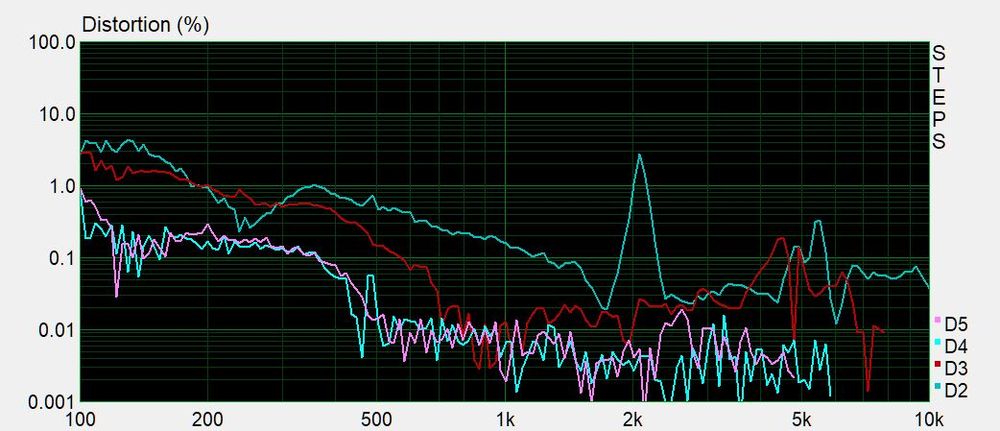PMT-2040N1625AL01-04

These drivers are tiny. Like really tiny. Sure they aren't as small as the micro speakers you get inside mobile phones, but those aren't trying to be proper speakers. These little gems are.
While their surface area is similar to other small drivers, like the TC5, or the TB W2121S, these are a lot thinner. You can't squeeze a TC5 into a laptop. Drivers like these can be used in applications where more conventional ones cannot and of the ones that would fit, they tend to measure terribly. Most of them roll off around 1kHz and have a frequency response that's anything but flat.
While their surface area is similar to other small drivers, like the TC5, or the TB W2121S, these are a lot thinner. You can't squeeze a TC5 into a laptop. Drivers like these can be used in applications where more conventional ones cannot and of the ones that would fit, they tend to measure terribly. Most of them roll off around 1kHz and have a frequency response that's anything but flat.

First of all these are flat down to 300hz with useful extension below this. From the point of view of voice reproduction this makes all the difference vs the speakers that only go down to 1kHz. Then, compared to lots of other drivers of this type, are essentially flat all the way to 10kHz. That peak in the top octave is quite beneficial too. Most applications would have you listening to these off-axis and the peak will help to provide some sparkle up there when doing so.
Measuring distortion with this type of driver has to be done differently. Tiny full range drivers aren't designed, in any way, to produce high SPLs. They are designed to cover as much of the audible spectrum as possible but at low to average listening levels. Usually this isn't much of a problem because, while they can't go that loud, you're usually in the nearfield too, sitting 30-50cm away from them.
Still I figured these would be alright being fed 2.83Vrms but, alas, they could not and the shallow profile made them reach their limits. Xmax might be listed as only 0.4mm one way but their Xmech isn't much beyond that. Turning things down they managed to make it through a 100-20kHz sweep at 1.9Vrms.
Measuring distortion with this type of driver has to be done differently. Tiny full range drivers aren't designed, in any way, to produce high SPLs. They are designed to cover as much of the audible spectrum as possible but at low to average listening levels. Usually this isn't much of a problem because, while they can't go that loud, you're usually in the nearfield too, sitting 30-50cm away from them.
Still I figured these would be alright being fed 2.83Vrms but, alas, they could not and the shallow profile made them reach their limits. Xmax might be listed as only 0.4mm one way but their Xmech isn't much beyond that. Turning things down they managed to make it through a 100-20kHz sweep at 1.9Vrms.

The first thing that jumps out at you is the massive peak in second harmonic at 2kHz. No surprises there. These drivers have a flat, rectangular, shaped diaphragm and these usually have a horrible resonance at some point. What did surprise me was that the resonance only shows up in the second order and therefore isn't going to melt your ears off. What did surprise me was how clean the rest of the driver is everywhere else. Obviously distortion starts to rise fairly low in frequency but this is at a drive level just short of the voice coil smacking into something it shouldn't do. Still we're below 10% THD at 300Hz.

Dropping the drive level back to 1Vrms results in this distortion profile.

And then pulling it back to 0.28Vrms gives you this.
At 1Vrms and 50cm the speaker will give you 78dB.
At 0.28Vrms and 50cm the speaker will give you 67dB.
With a pair of speakers you'd be looking at 70-81dB. 81dB is loud and 70dB is more in line with someone watching YouTube videos on their laptop. At 70dB, for a pair, the distortion above 500Hz is excellent and then only really goes above 1% outside of the drivers useful range.
If you want a tiny, slim, speaker to fit into a laptop you cannot do much better than this. Very low distortion where it matters and a flat frequency response. If you're putting these into a laptop then you do not want to use a box behind them. They are a high Qts design and need to use the volume of the laptops body as their cabinet.
To test these I 3D printed a small baffle that the speaker slotted into and then hot-melt glued in place. The measurements were taken at about 8cm away from the driver, with a densely stuffed chamber sealed behind it. The chamber was large in volume relative to the drivers parameters. 8cm may not sound like a lot but with such a small diaphragm you're pretty much far-field.
At 1Vrms and 50cm the speaker will give you 78dB.
At 0.28Vrms and 50cm the speaker will give you 67dB.
With a pair of speakers you'd be looking at 70-81dB. 81dB is loud and 70dB is more in line with someone watching YouTube videos on their laptop. At 70dB, for a pair, the distortion above 500Hz is excellent and then only really goes above 1% outside of the drivers useful range.
If you want a tiny, slim, speaker to fit into a laptop you cannot do much better than this. Very low distortion where it matters and a flat frequency response. If you're putting these into a laptop then you do not want to use a box behind them. They are a high Qts design and need to use the volume of the laptops body as their cabinet.
To test these I 3D printed a small baffle that the speaker slotted into and then hot-melt glued in place. The measurements were taken at about 8cm away from the driver, with a densely stuffed chamber sealed behind it. The chamber was large in volume relative to the drivers parameters. 8cm may not sound like a lot but with such a small diaphragm you're pretty much far-field.

